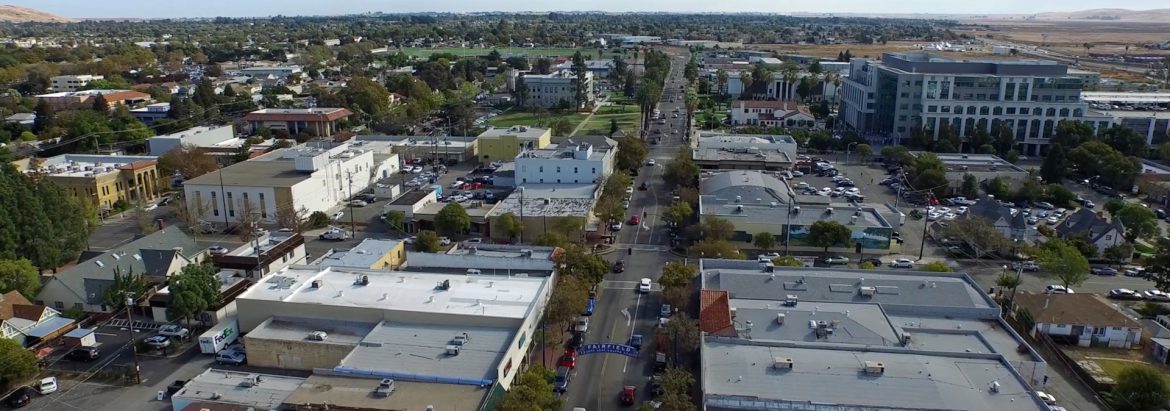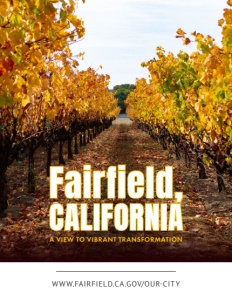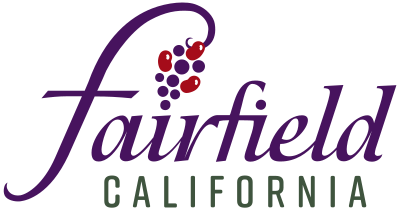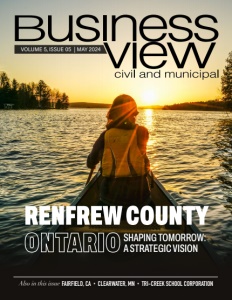City of Fairfield, California
A View to Vibrant Transformation
Dynamic infrastructure, economic development and focus on its residents provide for an exciting place to call home
Fairfield, California, is an exemplary model of Northern California living, marrying accessibility with a mosaic of residential, commercial, and natural amenities. At its heart, Fairfield is more than a waypoint between major cities; it’s a burgeoning community with a rich convergence of experiences and opportunities for its 120,000 residents.
David Zellers, Jr., the Community and Economic Development Director for the City of Fairfield, is captivated by the city’s unique charm and potential. With a tenure of over half a year, Zellers offers an insightful perspective on what makes Fairfield a standout locale in the North Bay area.
“Fairfield is a unique place,” Zellers begins, his enthusiasm for the city obvious. He outlines the city’s significant advantages, from its considerable size to its varied neighborhoods, each with character and appeal. Zellers is drawn to Fairfield’s “special assets,” a term he uses to encapsulate the city’s myriad benefits.
Zellers notes that Fairfield’s prime asset is its prime location. The city is strategically situated with exceptional access to major interstate systems—Interstate 80, Interstate 680, and California Highway 12. This network of highways, complemented by AMTRAK Capital Corridor service, ensures the seamless movement of people and industry, a critical factor in Fairfield’s economic vitality and residents’ quality of life.
But Fairfield’s allure extends beyond its logistical advantages. “What’s unique about Fairfield,” Zellers explains, “is that it offers different kinds of life within the city limits.” Fairfield caters to a broad spectrum of lifestyles and preferences, from diverse housing options and shopping venues to recreational opportunities both within and surrounding the city. According to Zellers, this variety demonstrates Fairfield’s multifaceted nature, making it a place where location plays a central role but is just one among many of the city’s great attributes.
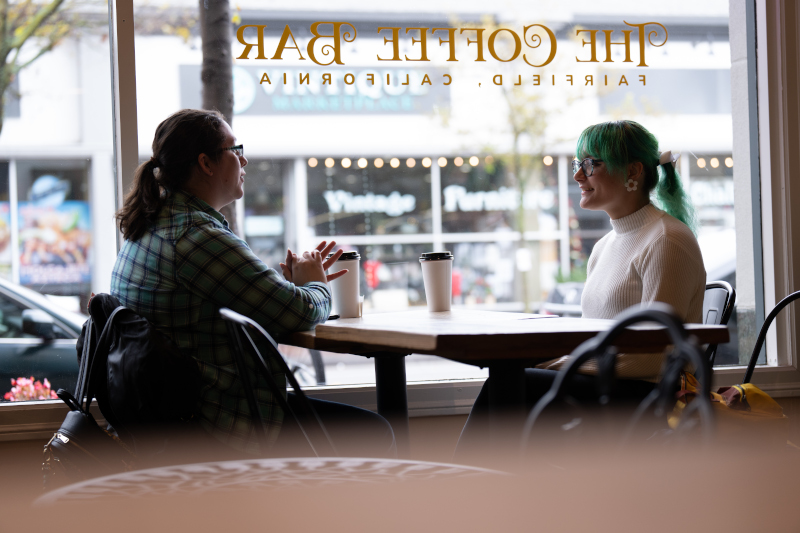
Revitalizing Fairfield’s Heart
In the ongoing narrative of Fairfield’s transformation, a focal point of discussion centers on the ambitious endeavors to revitalize its downtown core and adjacent commercial corridors. This strategic area, affectionately termed the “Heart of Fairfield,” is poised for a renaissance that promises to blend tradition with innovation, enhancing the city’s appeal as a destination for businesses and residents.
“We have a couple of things that we’re excited about,” Zellers announces enthusiastically, outlining the comprehensive strategy designed to invigorate the Heart of Fairfield district. As Zellers explains, this district extends beyond the traditional central business district to include a strategic corridor linking it directly to Interstate 80. Planned enhancements in the area are multifaceted, focusing on improving circulation within the central business district through a new streetscape.
“In the central business district, the goal is to create an arts, entertainment, and food district,” Zellers elaborates, pinpointing the critical role of culinary and cultural experiences in drawing people out of their homes. He emphasizes the city’s intent to attract unique restaurants and experiential retail outlets, offering goods and services that provide a distinct, tangible experience unavailable online.
Zellers further reveals plans for the broader corridor, including Complete Streets projects to ensure safer access for pedestrians, cyclists, and motorists. These initiatives are part of a larger vision of revitalizing shopping centers and integrating higher-density housing to support the downtown area’s commercial vibrancy. “To have a successful downtown, we want to increase the housing opportunities in that area,” Zellers asserts.
A cornerstone of Fairfield’s downtown revitalization effort is a two-acre site the city is poised to develop in partnership with a developer. The site aims to catalyze higher-density commercial and residential opportunities. Zellers shares, “One of our really crown jewel projects right now is the two-acre site in our downtown. This project is part of a broader strategy to foster transit-oriented development, leveraging the proximity of the Amtrak station and the Fairfield Transportation Center to enhance connectivity and accessibility.”
A Hub for Food Manufacturing Excellence
Fairfield’s strategic vision extends into food manufacturing, positioning the city as a burgeoning hub in this sector. With a keen focus on leveraging local resources and infrastructure, the city aims to fortify its status as a center for high-quality food production, serving the domestic market and capturing international opportunities.
Zellers highlights Fairfield’s natural and infrastructural assets as pivotal to its success in the food manufacturing domain. “One of our greatest advantages here in Fairfield is our water resources,” he states, underlining the significance of having excess water and treatment capacity for a sector as water-intensive as food manufacturing.
The city’s strategic plan further identifies specific areas for development into an advanced manufacturing hub for the food and agriculture industries. This initiative aims to support the wine industry and agricultural activities in the Suisun Valley region while providing space and resources for existing food manufacturers to grow and new ones to invest in. “The goal is to develop it into the advanced manufacturing hub for food and agriculture industries here in the greater Suisun Valley region,” Zellers elaborates.
In discussing support for these industries, Zellers outlines the city’s role as a facilitator of essential services and partnerships. The forthcoming economic development work plan emphasizes being the “convener of the entities” necessary for a business’s success. This includes enhancing manufacturing efficiency, accessing international markets, and expanding the workforce. “Our goal…is first and foremost to be the convener,” Zellers says, highlighting the importance of strategic partnerships and relationships in supporting business growth.
Furthermore, Zellers underscores the city’s commitment to making the development process more transparent and streamlined. Efforts are underway to map out and publicize the development process, ensuring businesses can navigate expansions or relocations clearly and confidently. “We’re going to be looking to streamline it and make it much more publicly transparent,” he asserts, pointing to the city’s dedication to being business-friendly and supporting industry growth and sustainability.
Cultivating Fairfield’s Tourism and Leisure Landscape
Amidst its strategic economic endeavors, Fairfield is carving out a distinctive niche in the tourism sector, mainly through the promising agro-tourism and viticulture industries of the Suisun Valley. Zellers sheds light on Fairfield’s initiative to harness these growing sectors to foster a vibrant, experiential, and inclusive tourist destination.
“The Suisun Valley is seeing a growth in its agro-tourism, particularly wineries,” he begins, capturing the essence of Fairfield’s emergent appeal in the tourism sector. This growth is not confined to viticulture but spans a variety of agricultural endeavors, offering a new and diverse experience distinct from California’s more established wine regions. Zellers shares an anecdote to illustrate Fairfield’s wine’s international reach and growing reputation, recounting the surprise and pride when a team member discovered a Suisun Valley wine on a menu in India. “That was really great to see,” he comments.
He then emphasizes the importance of collaboration with agro-tourism and viticulture entities in the Suisun Valley, highlighting the natural symbiosis between the city and these industries. He outlines efforts to encourage ancillary businesses, such as hotels and tasting rooms, to invest in Fairfield, enriching the city’s tourism and leisure offerings. “It’s all about creating an energy around everybody pulling together,” he explains.
Addressing marketing strategies, Zellers acknowledges the role of Visit Fairfield, an independent entity focused on promoting the area’s tourism potential. He sees an opportunity for the City, alongside other local organizations like the Chamber of Commerce, to craft a unified marketing message that reflects the evolving preferences of travelers and businesses. “The more partners are aligned…it gives people confidence,” Zellers observes.
To this end, amongst the pivotal economic assets of the city are Jelly Belly, Anheuser-Busch, Clorox, Calbee, and Guittard. Zellers links the presence of these and other manufacturers to the exceptional quality of Fairfield’s water, which is an essential component in food and advanced manufacturing.”
Enhancing Fairfield’s Civic and Community Infrastructure
Its economic ambitions or scenic vistas do not solely define Fairfield’s narrative; it’s also a story of strategic infrastructure development to bolster community resilience, quality of life, and future growth. Zellers jumps into the infrastructure projects and initiatives underway.
“The state’s long-term rail plan has identified one of our Amtrak stations as a central hub for growth in the northern California area,” he shares with a sense of anticipation for the opportunities this recognition brings. Additionally, improvements to Interstate 80, overseen by Caltrans, are underway to ease traffic flow, further enhancing Fairfield’s accessibility and appeal.
A unique and invaluable asset to Fairfield, Travis Air Force Base, represents another cornerstone of the community’s identity and economic landscape. “It’s not a civilian asset, but Travis Air Force Base…is our largest employer,” Zellers remarks, emphasizing the base’s significance to Fairfield’s economy and community fabric. The base contributes to the local economy through its mission and associated businesses. “It enriches the community with highly skilled, disciplined, and leadership-ready individuals transitioning from military to civilian life,” Zellers says.
Turning to parks and recreation, Zellers highlights the city’s efforts to enhance public spaces, from renovating existing facilities to planning new parks and trails. These endeavors are rooted in the belief that quality of life is crucial, with recreational opportunities playing a pivotal role in community well-being. “Quality of life is an asset,” Zellers asserts, highlighting the importance of accessible outdoor and recreational spaces for residents to connect and engage with their environment and each other.
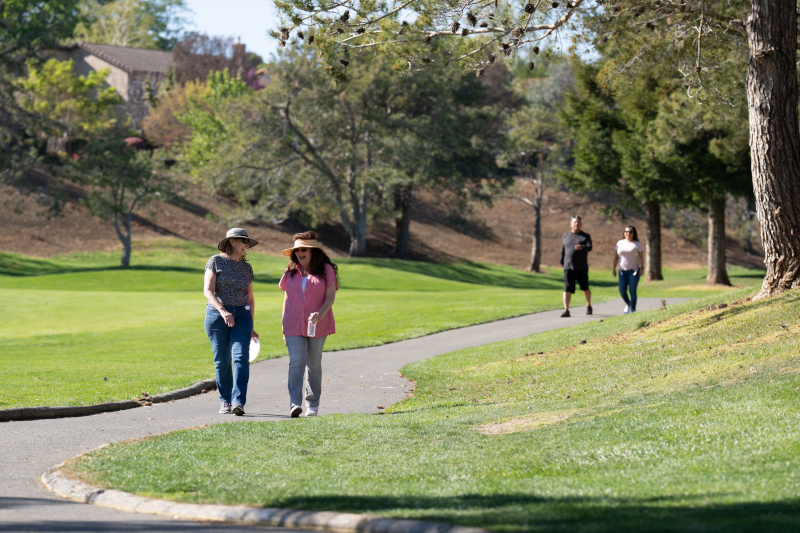
Envisioning Fairfield’s Future: Priorities and Plans
As Fairfield strides into the future, the city, under the leadership of the City Council and City Manager Dave Gassaway, is setting its sights on transformative initiatives poised to redefine its landscape and bolster its community; Zellers and the other members of Fairfield’s Senior Leadership Team share a common commitment to support that vision every day. These endeavors, ranging from infrastructural enhancements to strategic planning, encapsulate a vision for Fairfield that is both ambitious and grounded, aiming to foster a vibrant, inclusive, and forward-looking city.
“The infrastructure or the streetscape and complete streets work that will take place in the heart of Fairfield will be transformative,” Zellers asserts, highlighting the anticipated impact of these projects on the city’s central business district.
A notable focus for Zellers and his team is reimagining Fairfield’s primary shopping mall. This vision transcends the traditional mall concept, envisioning it instead as a hub of commerce and activity. “We’re working closely with the owners…as they reimagine what shopping malls can be,” he notes, signaling a shift towards more dynamic, multi-use spaces that respond to changing consumer preferences and economic landscapes.
Central to Fairfield’s strategic direction is the completion of its general plan update, an overarching framework that will guide the city’s growth and development in the coming years. This plan, alongside specific studies, aims to lay the groundwork for targeted growth initiatives, setting a clear direction for public and private investment in Fairfield. “The completion of our general plan update…will set the table for 2025 and 2026 and beyond,” Zellers explains, emphasizing the plan’s role in shaping the city’s future trajectory.
These priorities reflect a holistic paradigm designed to embrace both the traditional as well as new means of vision, vibrancy, and placemaking, blending aesthetic enhancements with economic vitality and community well-being. Through these initiatives, Fairfield is poised to address its residents’ immediate needs and establish a foundation for sustainable growth and prosperity. As Zellers and his team navigate the complexities of urban planning and economic development, their efforts demonstrate a commitment to creating a city that is adaptable and resilient yet also vibrant and inclusive, ready to embrace the opportunities and challenges of the future.
*Photo Credit: City of Fairfield, California
AT A GLANCE
City of Fairfield, California
What: A city focused on strategic initiatives to foster economic growth, enhance infrastructure, and enrich community life.
Where: Fairfield, California
PREFERRED VENDORS
McKinley Partners, One Lake project – https://www.onelake.com/
One Lake is a transit-oriented master-planned community in Solano County on 358 acres, with 53-acres of dedicated open space and parks. In addition to the 2,000+ homes, One Lake will include 30,000 square feet of neighborhood retail and commercial space. Guiding principles are focused on social connection, authenticity in design and unique experiences.
The 21-acre Lake Park (10- acre lake and 11-acre parks) is the heart of the community, offering residents outdoor exercise with a 1-mile walk around the perimeter and a series of unique experiences in a collection of nine distinct park settings. The Grove is an established 1.5-acre Homeowner Garden with vegetables, herbs, 181 trees, and a full-time Botanist to cultivate the farm and to curate events for homeowners in the community to promote a healthy lifestyle.
The Glass House and Amphitheater Park serve as launch pads for activities. Outdoor activities such as seasonal celebrations, volleyball, movie night, camp outs, and concerts are a huge part of the lifestyle amenity focus of One Lake. A portion of the Glass House is rented by Journey Coffee Café. The 4,500 SF Lake Club, currently under construction, the first of two private homeowner’s association clubs, will include multiple gathering areas, kitchen, swimming pool, spa, exercise spaces and exterior courtyards and lake viewing areas. The Sports Complex will be built in a future phase. One Lake is a Gigabyte community, featuring fiber connection to each residence and free Wi-Fi throughout all the community buildings to work from home.
